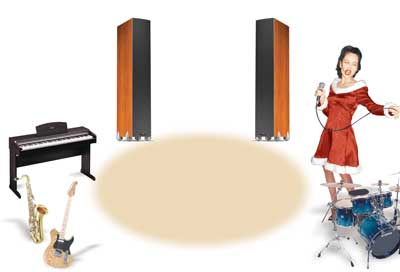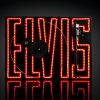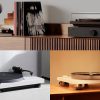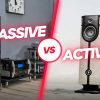Louder IS NOT Always better!
For some people shopping for loudspeakers is easy. These lucky souls have been around the audio block a few times and have the whole system figured out. Others tremble with dread at the prospect of looking at and listening to speakers while getting more confused at every step. This article is dedicated to you tortured souls, although the old hands among you may learn a thing or two as well. We’ll cover home and car speakers separately so nobody feels slighted.
Home Speakers
Have an idea about size and style that will fit your space and décor before you walk in the store. Narrow your search accordingly and try not to be distracted by models that you ultimately can’t use.
If looks are important to you don’t feel guilty about looking only at speakers that appeal to you visually. With so many speakers on the market I guarantee that there are speakers that will satisfy both your ears and your eyes.
Walk into the store with a plan. Do your research ahead of time and have some idea of what you’re looking for, otherwise the choice can be dizzying, The Internet is a good place to do research (especially www.polkaudio.com).
Bring familiar CDs & DVDs to listen to. If you are going to shop more than one store, listen to the same material. Yeah, I know that 1923 recording of Enrico Caruso is your favorite CD, but leave it at home because it is useless as an evaluation tool. Use recent well recorded material. Audio magazines, web sites and this newspaper are useful for finding out which CDs and DVDs sound good.
Listen to music first and most. You may have an idea of what a human singing voice or acoustic guitar might sound like in life, but I bet you have no idea what a laser death ray should sound like. Virtually 100% of the sounds you hear in a movie are artificially created. By all means listen to a movie soundtrack to confirm bass impact and dynamic range performance but only music can tell you about the fidelity of a speaker.
Even if you are shopping for a multi-channel kit, listen to just the front stereo speakers to start.
In Phase
Make sure the speakers are in phase. In-phase means that the positive output of the receiver is connected to the positive input of the speaker (and negative to negative) on all channels. Given all the wires and switching devices in most retail stores, it is easy for a wiring mistake to be made. When a speaker is connected out-of-phase it will produce very little bass and will have a poor center image. While facing both speakers that are out-of-phase, the sound will have a “spacey” quality and no sound will appear to come from the area in between the speakers. If you have any doubt whether a given speaker pair is connected correctly, ask a salesperson to reverse the polarity on just one of the speakers and see if it sounds better.
Out of Phase

Make sure the receiver is properly set up for the type of speaker you are listening to. Today’s multi-channel receivers have “Bass Management” or “Speaker Set-Up” options that optimize the sound for the type of speaker. The proper settings for palm-of-hand-sized speakers are very different than those for full-sized speakers. Given the hustle and bustle of most stores, it is possible that the receiver you are listening with may not be set correctly for the speakers. Ask the salesperson to access the Speaker Set up menu and check the settings. (For an education on Bass Management.)
Limit your comparisons. I have been evaluating speakers professionally for over 30 years and if I try to compare more than three pairs of speakers at one sitting I get confused. Narrow your search and try to be methodical about listening to your choices.
The position of a speaker in a room can have an enormous impact on its sound. If you listen to two pairs of speakers that are located in different parts of the room, you are comparing apples to oranges and it is an invalid comparison. Every audio salesperson in America will hate me for telling you this but ask the salesperson to position the two pairs of speakers as close to each other as is practical before doing a comparison.
Speaking of comparisons, while quick-switch A/B comparisons have some value, I suggest listening to one song all the way through on one speaker and then repeating it on the other speaker. Some speakers “jump off the shelf” and sound flashy at first listen and then turn out to be annoying sounding over time. The speaker that sounds most natural and well balanced gets your toe tapping and emotionally connecting with the music will be the more satisfying speaker over the long haul.
Louder is not necessarily better. Yes, high efficiency (the ability to play loud with a low power receiver) is a beneficial trait up to a point but it is not a predictor of sound quality. Don’t confuse quantity with quality.
I could go on and on but you’re running out of patience and I’m running out of paper. Let me suggest you read our Home Theater Handbook available by calling (800) 377-7655.
Car Speakers
First thing to figure out is how you are going to get your speakers installed and how much you are willing to pay for installation (if anything). Why? Because if you want to do the installation yourself or you have a limited amount of funds for installation, you’ll want to choose speakers that drop into the factory locations with little to no modification. However if you are highly skilled or have some dough to burn for pro installation, you have a wider range of speaker and location choices.
The next step for the drop-in crowd is to figure out what fits in your vehicle. Polk’s on-line fit guide is based on the most comprehensive vehicle database in the US of A.
Now that you know what fits, it is time to go to the store. Walk into the store with a plan. Do your research ahead of time and have some idea of what you’re looking for, otherwise the choice can be dizzying, The Internet is a good place to do research.
Bring familiar CDs to listen to. If you are going to shop more than one store, listen to the same material. No matter that your 1968 recording of The Village People is your favorite CD, leave it at home because it is useless as an evaluation tool. Use recent well recorded material. Audio magazines, web sites and this newspaper are useful for finding out which CDs and DVDs sound good. Never, ever use radio to evaluate speakers.
Make sure the speakers are in phase. In-phase means that the positive output of the amp is connected to the positive input of the speaker (and negative to negative). Given all the wires and switching devices in most retail stores, it is easy for a wiring mistake to be made. When a speaker is connected out-of-phase it will produce very little bass and will have a poor center image. While facing both speakers that are out-of-phase, the sound will have a “spacey” quality and no sound will appear to come from the area in between the speakers. If you have any doubt whether a given speaker is connected correctly, ask a salesperson to reverse the polarity on just one of the speakers and see if it sounds better.
The position of a speaker in a room can have an enormous impact on its sound. If you listen to two pairs of speakers that are located in different parts of the room, you are comparing apples to oranges and it is an invalid comparison. Speakers that are on the display board at ear height have a big sonic advantage over ones that are above your head or firing into your belly. This is an even bigger issue with subwoofers. Subs that are on the floor pound harder than subs that are up on a shelf. Every audio salesperson in America will hate me for telling you this but ask the salesperson to place the subs you are comparing on the floor as close to each other as is practical before doing a comparison.
Speaking of comparisons, while quick-switch A/B comparisons have some value, I suggest listening to one song all the way through on one speaker and then repeating it on the other speaker. Some speakers “jump off the shelf” and sound flashy at first listen and then turn out to be annoying sounding over time. The speaker that sounds most natural and well balanced gets your toe tapping and emotionally connecting with the music will be the more satisfying speaker over the long haul.
Louder is not necessarily better. Yes, high efficiency (the ability to play loud with a low power receiver) is a beneficial trait up to a point but it is not a predictor of sound quality. Don’t confuse quantity with quality.
There is so much more I could tell you about how to make speaker choices but there’s a limit to the pages in this newspaper. Let me suggest you read our Car Stereo Handbook available by calling (800)377-7655.
by Paul DiComo, Polk Audio (reprinted with permission)






























